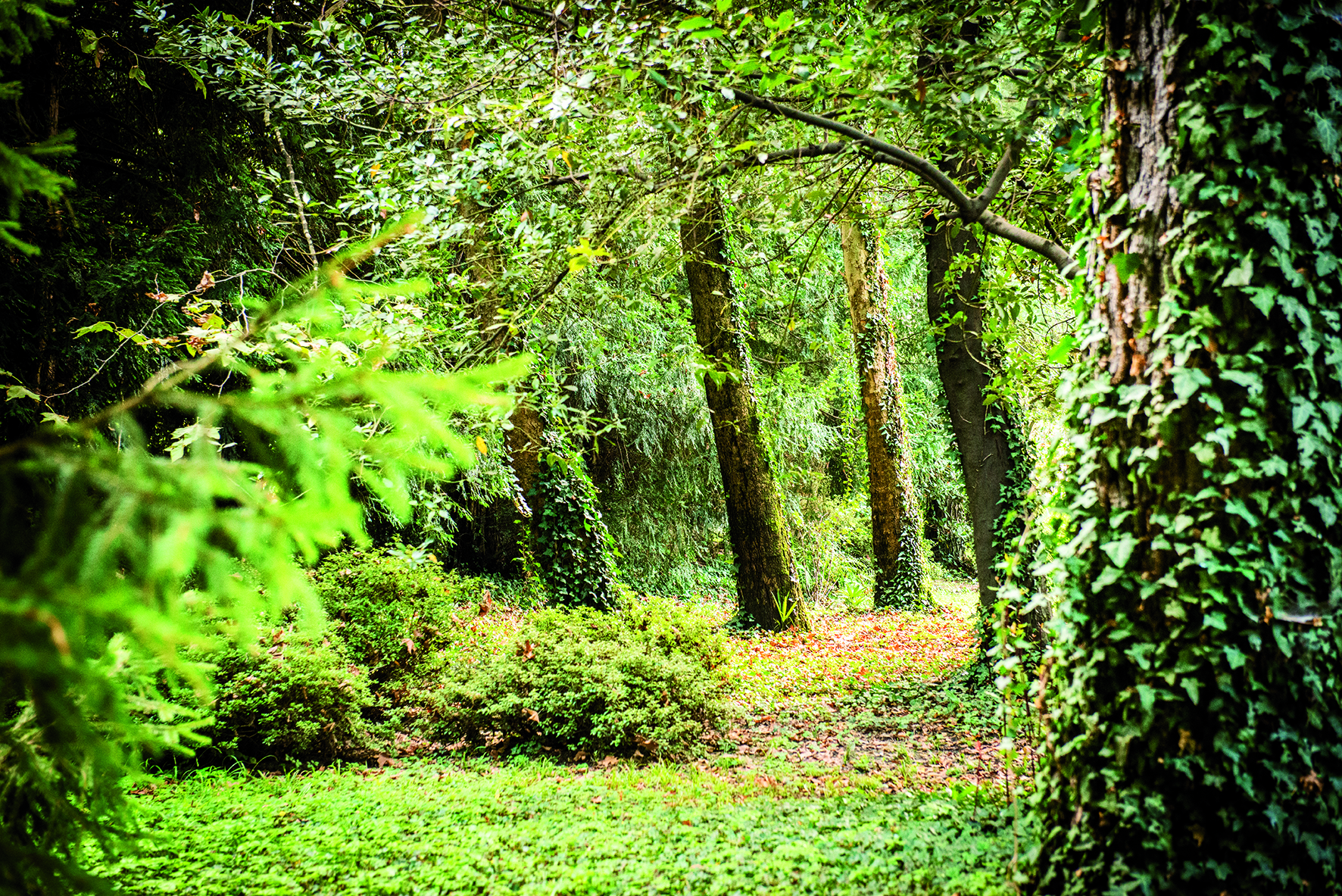The Cedar of Lebanon
Here we can observe the stump of a great cedar of Lebanon. Present in the garden’s original design and planted “in solitude,” it was one of the Park’s oldest trees.
Its rings which are clearly visible, reveal not only the tree’s age but also its history. A year rich in rainfall created a thicker ring compared to one corresponding to a dry year.
Nearby, a small cedar sapling, a “great-great-grandchild” we can say, was recently planted. It will gradually make space for itself, perhaps one day reaching the imposing size of its ancestor.
The cedar of Lebanon is a conifer native to the Taurus Mountains and Lebanon. As it grows, its form changes. Initially conical, it later broadens and opens with nearly horizontal branches which is unusual for a conifer in snowy regions. First, it protects itself, then it shades and shelters.
Its blue-green needle-like leaves grow in dense tufts, and its dark grey bark exudes a balsamic resin whose scent still lingers here after years.
Few trees manage to convey such a profound sense of unshakable, almost sacred and symbolic majesty. Its wood was used to build the Great Temple of Jerusalem, and King Solomon's throne was made of cedar wood.
In the first poem of humanity, the Epic of Gilgamesh, the Sumerian king of Uruk, in his quest for eternal fame, fells a great cedar tree and slays the fierce guardian of the forest. This narrative seems to recount the dawn of the conflict between man and nature.
In 118 AD, Emperor Hadrian issued a decree, one of the earliest forms of environmental protection in history, establishing a grove of cedars as imperial property.
Emily Dickinson envisioned her home as something otherworldly, removed from prose, "It has rooms like cedars, impenetrable to sight. And an indestructible roof, the expanse of the sky."

Here we can observe the stump of a great cedar of Lebanon. Present in the garden’s original design and planted “in solitude,” it was one of the Park’s oldest trees.
Its rings which are clearly visible, reveal not only the tree’s age but also its history. A year rich in rainfall created a thicker ring compared to one corresponding to a dry year.
Nearby, a small cedar sapling, a “great-great-grandchild” we can say, was recently planted. It will gradually make space for itself, perhaps one day reaching the imposing size of its ancestor.
The cedar of Lebanon is a conifer native to the Taurus Mountains and Lebanon. As it grows, its form changes. Initially conical, it later broadens and opens with nearly horizontal branches which is unusual for a conifer in snowy regions. First, it protects itself, then it shades and shelters.
Its blue-green needle-like leaves grow in dense tufts, and its dark grey bark exudes a balsamic resin whose scent still lingers here after years.
Few trees manage to convey such a profound sense of unshakable, almost sacred and symbolic majesty. Its wood was used to build the Great Temple of Jerusalem, and King Solomon’s throne was made of cedar wood.
In the first poem of humanity, the Epic of Gilgamesh, the Sumerian king of Uruk, in his quest for eternal fame, fells a great cedar tree and slays the fierce guardian of the forest. This narrative seems to recount the dawn of the conflict between man and nature.
In 118 AD, Emperor Hadrian issued a decree, one of the earliest forms of environmental protection in history, establishing a grove of cedars as imperial property.
Emily Dickinson envisioned her home as something otherworldly, removed from prose, “It has rooms like cedars, impenetrable to sight. And an indestructible roof, the expanse of the sky.”
Audio

